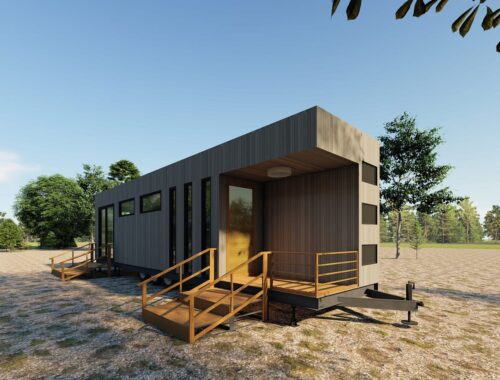Do Drillers Want What Uncle Sam Is Selling?
>
When Donald J. Trump was running for president, it was hard to pin down his stance on drilling for oil and gas on public lands. His son, Don, Jr., talked of striking a thoughtful balance, even as the candidate spoke rapturously of “sweet, beautiful oil.”
That ambiguity is gone.
In the first half of this year, the Trump Administration will open up more acres for potential oil and gas leasing across much of the West than it offered there in all of 2017, according to an analysis of government auction data by environmental group WildEarth Guardians. That comes atop an already 56-percent increase in acreage auctioned off in 2017 over what the Obama Administration offered in its final year, according to an analysis of similar data by the Center for Biological Diversity.
Some of those new parcels abut parks and cultural sites, or are in important wildlife areas. At least 13 western national parks would be affected by lease sales that are in progress or have been recently completed, according to the National Parks Conservation Association.
The message is clear: The public estate may be the land of many uses. But in the Trump Administration, some uses get more emphasis than others.
“Our goal is an America that is the strongest energy superpower that this world has ever known,” Secretary of the Interior Ryan Zinke told the Heritage Foundation last September. The goal isn’t simply energy independence for the nation, but “energy dominance,” he added. To that end, last summer Zinke ordered the Bureau of Land Management’s western field offices to hold quarterly lease auctions for energy development.
It’s true that previous administrations had also ramped up leasing of public lands. (See: Bush, George W.) The Obama Administration held lease auctions near Dinosaur National Monument. But the vigor and scale of the latest push has startled many. “It’s really, in a word, unleashed,” says Nick Lund, NPCA’s senior manager of landscape conservation.
That worries some environmental and advocacy groups, who say the BLM doesn’t know the impact drilling will have on these protected places. In Utah, for example, several organizations are protesting this month’s auction of numerous parcels in the southeast part of the state. In a December letter to the BLM district manager overseeing the auction, the superintendent of several Utah national parks and monuments, including Canyonlands and Arches, pointed out that the agency hadn’t fully evaluated how allowing energy exploration would affect the nearby parks’ air quality, soundscapes, and scenic views.
The BLM also hadn’t considered damage to the parks’ “lightscape,” the superintendent wrote. Hovenweep and Natural Bridges national monuments, along with Canyonlands, are certified as International Dark Sky Parks. But 18 parcels up for auction are between three and 25 miles of Hovenweep, and several more lie within 20 to 30 miles of Arches and Canyonlands, the superintendent wrote. All of those could host machinery with lights that would change the night sky.
Along with the boost in auctions, the Trump Administration has also been scything through regulations. Zinke says his efforts are an attempt to streamline a permitting process that has been dogged by inefficiency and delay. Opponents call them an attempt to aid business by weakening environmental protections.
In a January internal memorandum, BLM told its field offices to halt all Master Leasing Plans (MLPs) in progress, and not begin any new ones. MLPs started during the Obama Administration and are intended as a way to gather public input before shaping a landscape development plan. The area around Moab, Utah, completed one of the first such plans. It was years in the making and has largely been considered a success. Yet the Administration’s memo said the plans duplicate existing layers of planning.
Environmental groups were outraged. “MLPs might not have much in the way of pizzazz, but they are incredibly important tools to help land managers and local communities plan where and how oil and gas development happens, while avoiding conflicts between outdoor recreation, wildlife, and water supplies,” Greg Zimmerman, deputy director of the Center for Western Priorities, said in a statement.
Yet for all this, critics say that oil and gas companies frequently don’t seem to want what Uncle Sam is selling—a fact that’s reflected in demand for parcels, and their prices.
To be sure, oil and gas companies have gobbled up new leases in oil-soaked patches such as southeast New Mexico’s Permian Basin and in North Dakota. But according to analysis of government data by Taylor McKinnon of the Center for Biological Diversity, the number of acres in the Lower 48 that companies bid to lease declined by 14 percent between 2016 and 2017—from about 921,000 to about 793,000 acres.
There are other recent or upcoming examples of lackluster interest. In Nevada the government is currently proposing an auction for the scenic Ruby Mountains, even though the idea is unpopular among many, and a geologist told the Los Angeles Times that studies of the rock “‘show there is low to no potential for oil.’” Last December, perhaps the largest onshore lease auction ever held by the nation—10.3 million acres in the National Petroleum Reserve-Alaska—garnered just seven bids, for 80,000 acres.
It’s “almost an attempt to force-feed industry” these lands and waters, says Chase Huntley, energy and climate program director for the Wilderness Society. According to a new report by that group, only 6 percent of the total acreage offered last year by Uncle Sam was leased by industry (if the massive acreage of the National Petroleum Reserve-Alaska is counted).
And many of the parcels that are leased by companies are done so for little money—sometimes the $2 minimum per acre, observers say. Once such land is leased to an energy company, “it really precludes other options,” says Bobby McEnaney, senior lands and wildlife analyst for the Natural Resources Defense Council. The company gets to hold onto it. The land cannot be used by a youth summer camp, or an outfitter, for instance.
Kathleen Sgamma, president of the Western Energy Alliance, an industry group, dismissed the idea that energy companies aren’t interested in the parcels. Sgamma cited Alaska and Nevada as “outliers.” The industry is still switching gears from the Obama years, Sgamma says, when “the gov’t devalued the federal mineral estate… by throwing up so many obstacles that, frankly, they chased many companies away,” from operating on public lands. (The volume of oil produced on federal lands actually increased 60 percent from 2008 through 2016, though natural gas volumes declined, according to the government—trends influenced in part by larger market forces.)
“There are positive signs under the Trump Administration and we will see operators slowly returning to public lands once they see reduced timeframes and regulatory certainty,” Sgamma says.
What does the rest of 2018 hold? “We don’t have reason to think that the past will not be prologue,” says Huntley, of the Wilderness Society. The Department of Interior doesn’t seem particularly concerned, he said, that it is “having a national garage sale every quarter.”
The next major chance to look for interest in those sales will be March 21. That day, the Department of Interior holds the largest auction of offshore leases in U.S. history, including all unleased areas on the Gulf of Mexico’s outer continental shelf—77.3 million acres, an area about the size of New Mexico.
Yet energy companies aren’t so interested in expensive deepwater exploration these days, IHS Markit wrote last fall. Major companies such as Shell, ExxonMobil and BP have been retrenching, divesting from such operations and looking elsewhere to spend their money.
Time will tell whether Zinke’s enthusiasm can entice them to return.
You May Also Like

シャーシ設計の最適化手法とその応用
March 20, 2025
Dino Game: A Timeless Classic in the World of Online Gaming
March 22, 2025